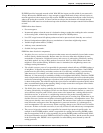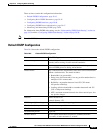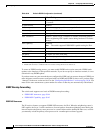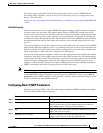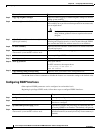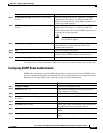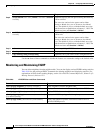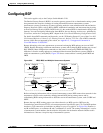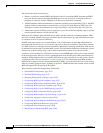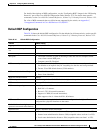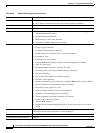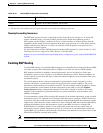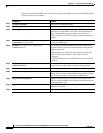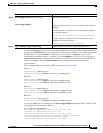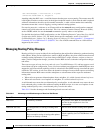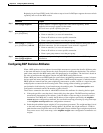
38-50
Cisco Catalyst Switch Module 3110 and 3012 for IBM BladeCenter Software Configuration Guide
OL-12189-01
Chapter 38 Configuring IP Unicast Routing
Configuring BGP
The network has these characteristics:
• Routers A and B are running EBGP, and Routers B and C are running IBGP. Note that the EBGP
peers are directly connected and that the IBGP peers are not. As long as an IGP allows the two
neighbors to reach one another, IBGP peers do not have to be directly connected.
• All BGP speakers within an autonomous system must establish a peer relationship. That is, the BGP
speakers within an autonomous system must have a logical full mesh. However, BGP4 provides
techniques to reduce the requirement for a logical full mesh: confederations and route reflectors.
• Autonomous system AS 200 is a transit autonomous system for AS 100 and AS 300—that is, AS 200
transfers packets between AS 100 and AS 300.
BGP peers first exchange their full BGP routing tables and then send only incremental updates. BGP
peers also exchange keepalive messages (to ensure that the connection is up) and notification messages
(in response to errors or special conditions).
In BGP, each route consists of a network number, a list of autonomous systems that information has
passed through (the autonomous system path), and a list of other path attributes. The primary function
of a BGP system is to exchange network reachability information, including information about the list
of autonomous-system paths, with other BGP systems. This information determines autonomous-system
connectivity, to prune routing loops, and to enforce autonomous-system-level policy decisions.
A router or switch running Cisco IOS does not select or use an IBGP route unless it has a route available
to the next-hop router and it has received synchronization from an IGP (unless IGP synchronization is
disabled). When multiple routes are available, BGP bases its path selection on attribute values. See the
“Configuring BGP Decision Attributes” section on page 38-57 for information about BGP attributes.
BGP Version 4 supports classless interdomain routing (CIDR), so you can reduce the size of your routing
tables by creating aggregate routes, resulting in supernets. CIDR eliminates the network classes within
BGP and supports the advertising of IP prefixes.
These sections contain this configuration information:
• Default BGP Configuration, page 38-51
• Enabling BGP Routing, page 38-53
• Managing Routing Policy Changes, page 38-56
• Configuring BGP Decision Attributes, page 38-57
• Configuring BGP Filtering with Route Maps, page 38-59
• Configuring BGP Filtering by Neighbor, page 38-60
• Configuring Prefix Lists for BGP Filtering, page 38-61
• Configuring BGP Community Filtering, page 38-62
• Configuring BGP Neighbors and Peer Groups, page 38-64
• Configuring Aggregate Addresses, page 38-66
• Configuring Routing Domain Confederations, page 38-66
• Configuring BGP Route Reflectors, page 38-67
• Configuring Route Dampening, page 38-68
• Monitoring and Maintaining BGP, page 38-69



